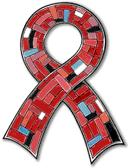Washington, DC — Sunday, March 20, marks the fifth annual National Native HIV/AIDS Awareness Day (NNHAAD). America’s native populations have been severely impacted by the epidemic, and NNHAAD provides an opportunity to raise awareness of its effects on the community and encourage American Indians and Alaska Natives to get educated about their risk factors and to get tested.
When adjusted for population size, American Indians and Alaska Natives have the third highest rate of HIV infection in the United States, behind African Americans and Latinos. What’s more, infection rates may actually be higher than reported, as states with high native populations like Montana, Washington and Oregon provide limited HIV surveillance data. American Indians and Alaska Natives also have much poorer health outcomes than other racial/ethnic groups.
As a community, American Indians and Alaska Natives face unique challenges in terms of HIV prevention, screening and treatment. Much of America’s native population lives in extremely rural communities, both on and off reservations, where HIV services are not always readily available. What’s more, where screening and treatment services are available, many are hesitant to utilize them due to fear of disclosure among small, tight-knit communities.
“The National Minority AIDS Council is proud to stand with its American Indian and Alaska Native brothers and sisters in marking this important day,” said NMAC Deputy Executive Director Daniel C. Montoya. “America’s native peoples are too often left out of the discussion on issues that affect their health and lives. NMAC is committed to working with leaders in these communities, and the organizations that serve them, to address the devastating toll HIV/AIDS has had on this woefully under-served population.”
###
Contact: Kyle Murphy (202) 483-6622 ext. 333
kmurphy@nmac.org
